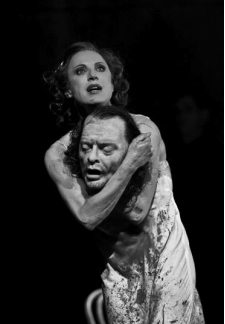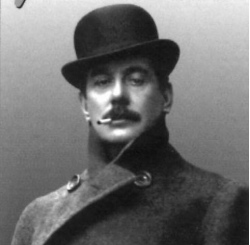We look at time in an abstract way and see it stretching out to the horizon, leaping off the edge of the world and galloping on without limit into the wilds of the universe. In a sense, we view the infinity of time as a limitless extension of a space. A line the continues beyond the boundaries of human sight. The analog watch puts time on a leash and walks it around a dial on our wrist.
One of the many thoughts that flooded through my mind while watching San Francisco Opera‘s production of Leos Janacek‘s The Makropulos Case had to do with the religion of the engineers. This idea of the singularity, of shedding this mortal coil in favor of an electronic/digital instantiation of whatever it is we call our lives. The advantage, at least from an engineering perspective, is that, in silicon, we live forever. Or at least that’s the idea in so-called transhumanist circles.
The original story of Janacek’s opera was written by Karel Capek, who is probably better known as the author of the play R.U.R.— a story that featured and coined the term, robot. The engineering version of paradise and eternal life takes the form of inhabiting the robot, where all that was irreplaceable in our mortality can be put on a charge card at the hardware store. Worn parts easily replaced or upgraded.
Janacek’s The Makropulos Case takes a look at what immortality does to the morality of its anti-heroine, Elina Makropulos. Perpetual youth leaves her nothing but apathy and disconnection from the people around her. She’s lived many lifetimes and seen all the people around her grow old and die. The pain and suffering of others has ceased to matter, she’s seen it all before. In the San Francisco Opera production, soprano Karita Matilla, offers a stunningly dramatic performance showing the weight and weariness brought on by eternal youth. The opera, written in 1926, provides a very modern look into the dark side of living an endless series of lifetimes. We often look at the misbehavior of the Greek gods, and wonder how the immortals can be so foolish. Janacek and Capek show us that eternal youth changes the basic equation of human life. All human values are revalued on a payment plan that stretches out to infinity. Something essential is lost in the translation. We’re left with an entity that is too big to fail.
Comments closed




